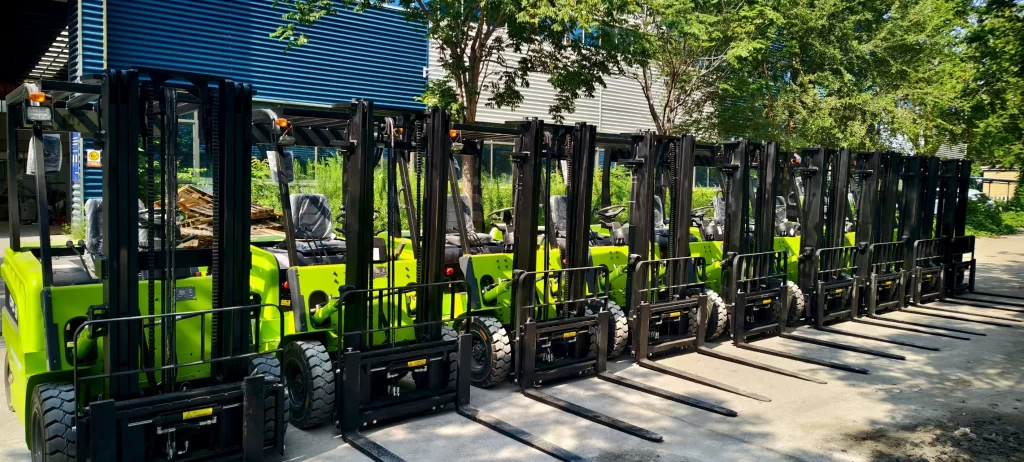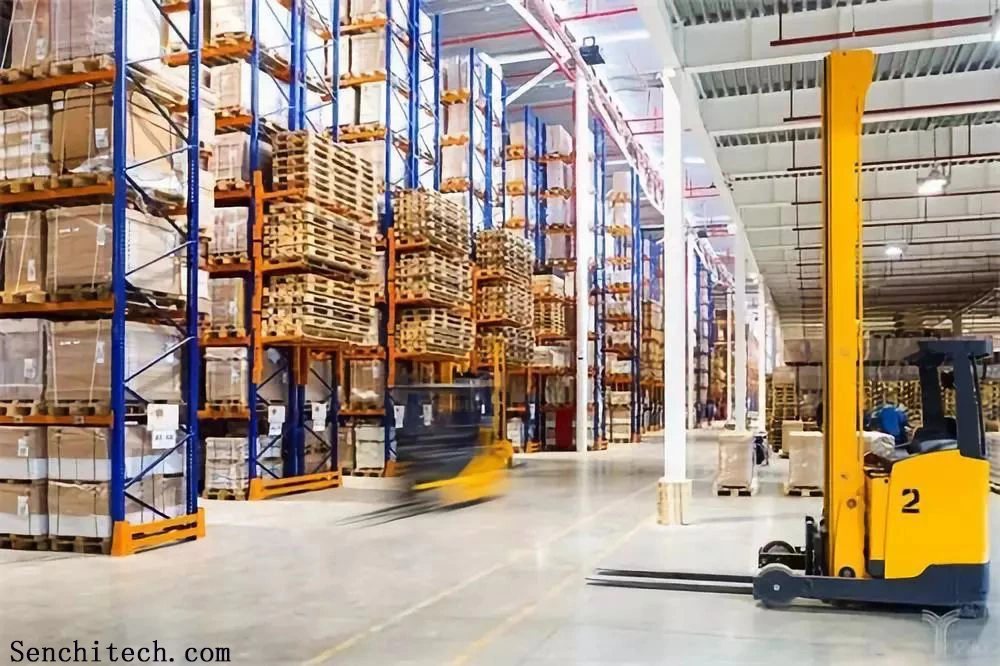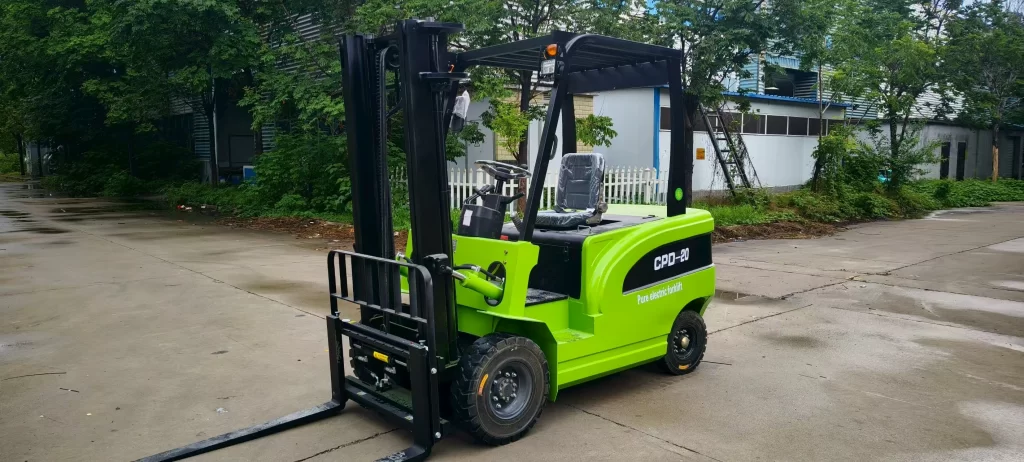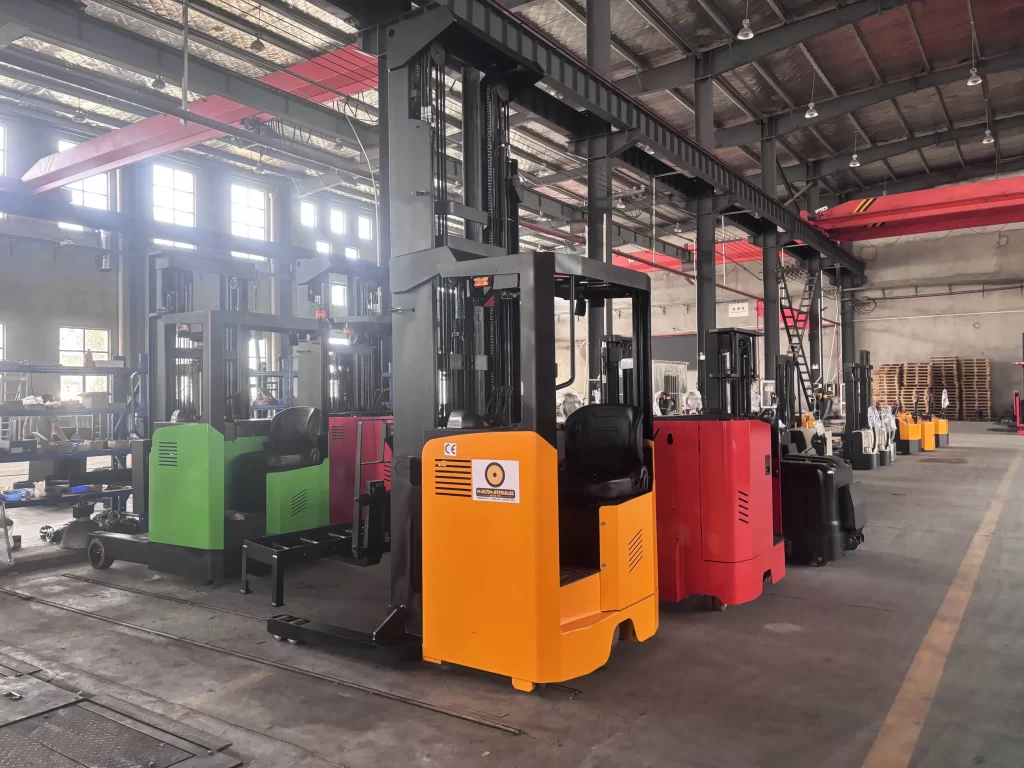Electric Counterbalance Forklifts vs. Reach Trucks: How to Choose the Right Equipment for Your Warehouse
In today’s fast-paced logistics environment, selecting between electric counterbalance forklifts and reach trucks is a critical decision that impacts operational efficiency. While both machines share core functionalities like lifting heavy loads and battery-powered operation, their specialized designs cater to distinctly different warehouse needs.
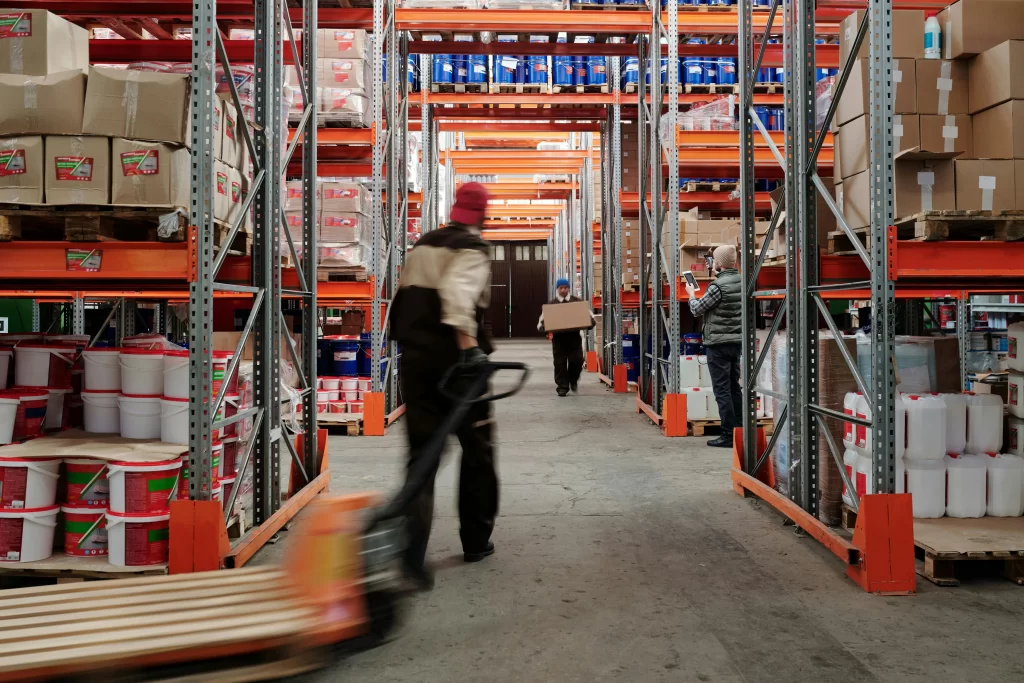
Key Differences in Design and Functionality
Counterbalance Forklifts: The Versatile Workhorse
- Balanced Weight System: Features a rear counterweight for stability without outriggers
- All-Terrain Capability: Performs equally well indoors and on rough outdoor surfaces
- Attachment Versatility: Compatible with numerous accessories including:
- Clamping attachments (bale clamps, drum handlers)
- Side shifters and fork positioners
- Push-pull devices for slip-sheet handling
- Rotators and tippers for specialized applications
- Crane arms and personnel platforms
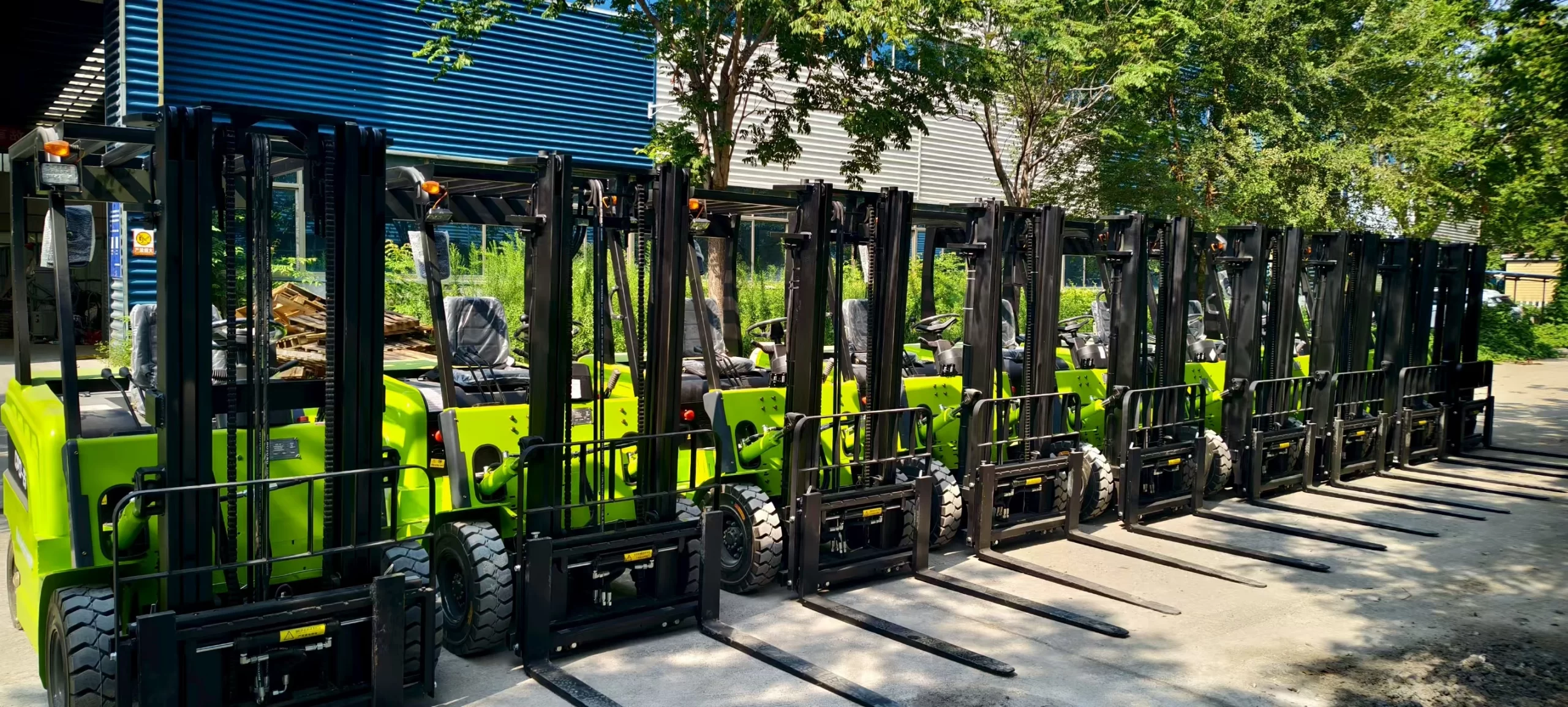

Reach Trucks: The Space-Saving Specialist
- Compact Design: Operates in aisles as narrow as 1.6m
- Vertical Reach: Extending masts access heights up to 16m
- Limited Attachments: Primarily uses specialized forks (triple forks or scissor forks) due to narrow-aisle constraints
Performance Comparison
| Feature | Counterbalance Forklift | Reach Truck |
| Aisle Width | ≥3m | 1.6–2m |
| Max Lift Height | ≤7m | Up to 16m+ |
| Load Capacity | 1–7 tons | 1–3 tons |
| Terrain Adaptability | All surfaces | Smooth floors only |
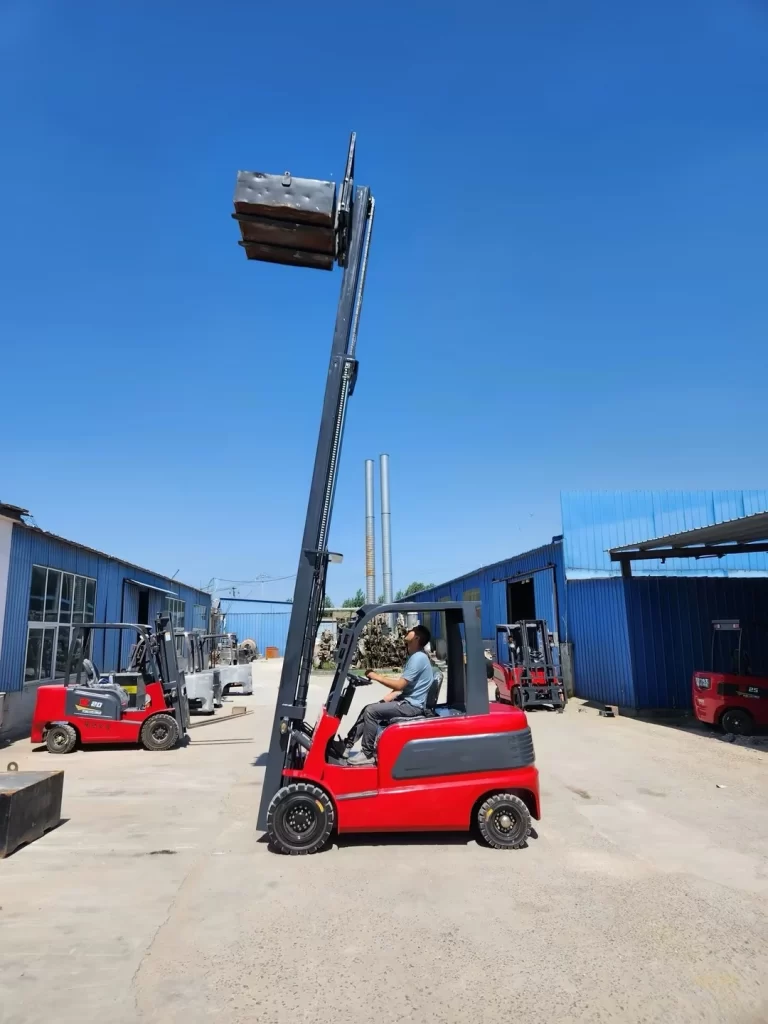
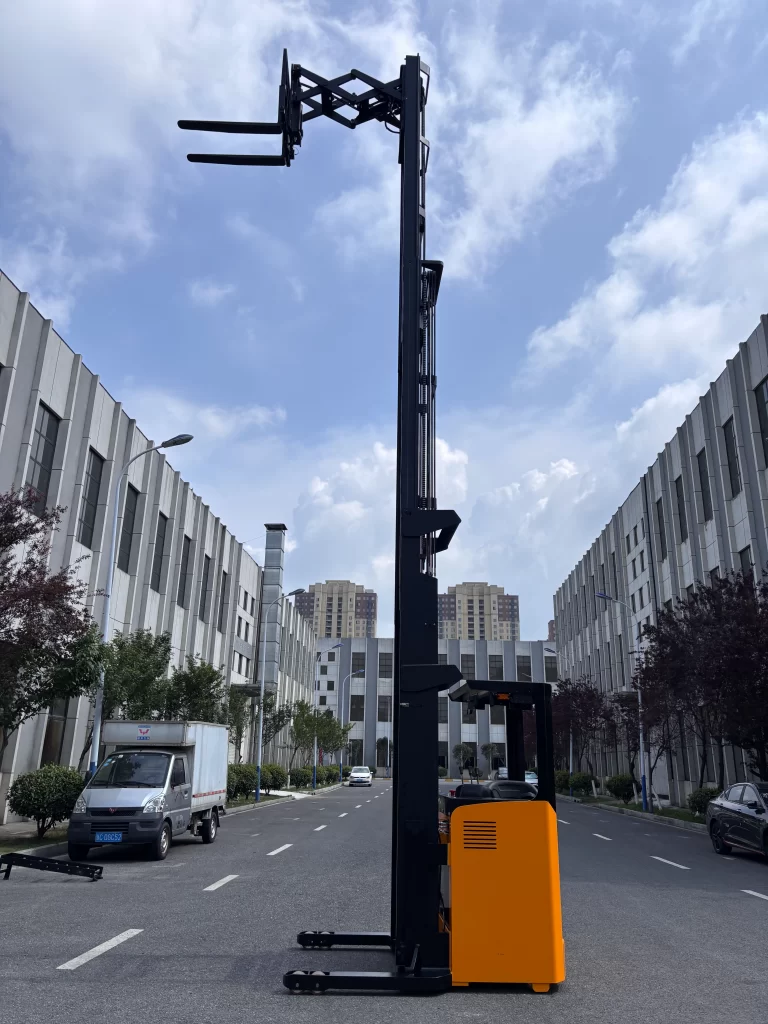
Selection Guide: 5 Key Considerations for Lifters
- Load Requirements:
- ≤3 tons: Both options work
- 3 tons: Requires counterbalance forklift
- Lift Height Needs:
- ≤7m: Suitable for both
- 7m: Reach truck recommended
- Operating Environment:
- Uneven/outdoor: Counterbalance forklift
- Narrow aisles: Reach truck
- Space Constraints:
- Measure minimum aisle width and turning radius
- Budget Factors:
- Counterbalance forklifts generally more cost-effective
- Reach trucks offer better ROI in high-density storage
Why Choose Our Equipment Solutions?
Our reach trucks deliver exceptional value through:
- Durable H-Beam Mast Construction for safe high-level operation
- Premium Curtis Control Systems (U.S. made) for precision handling
- Energy Recovery Technology saving 15-30% in power costs
- Custom Configuration Options to match specific workflows
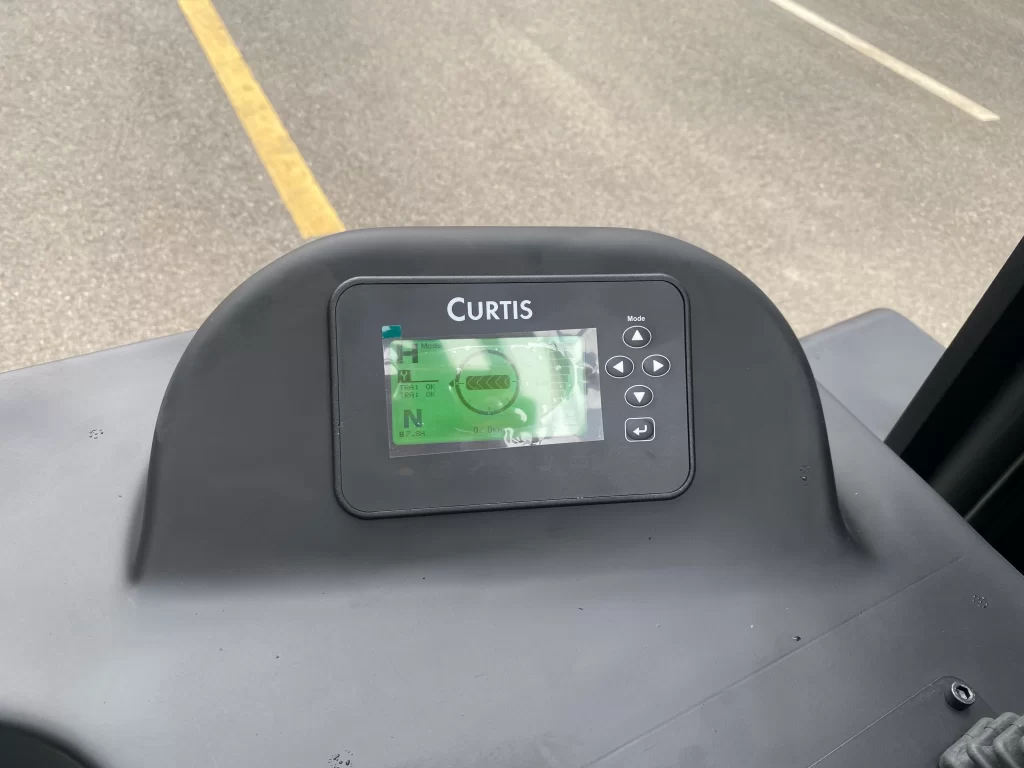
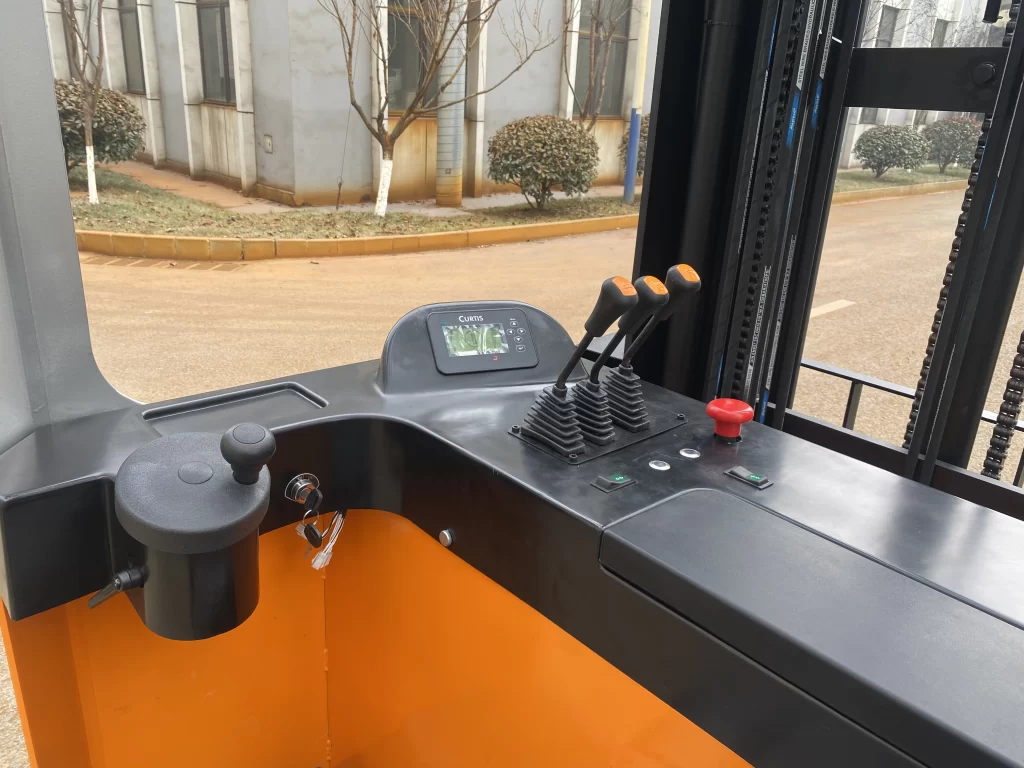
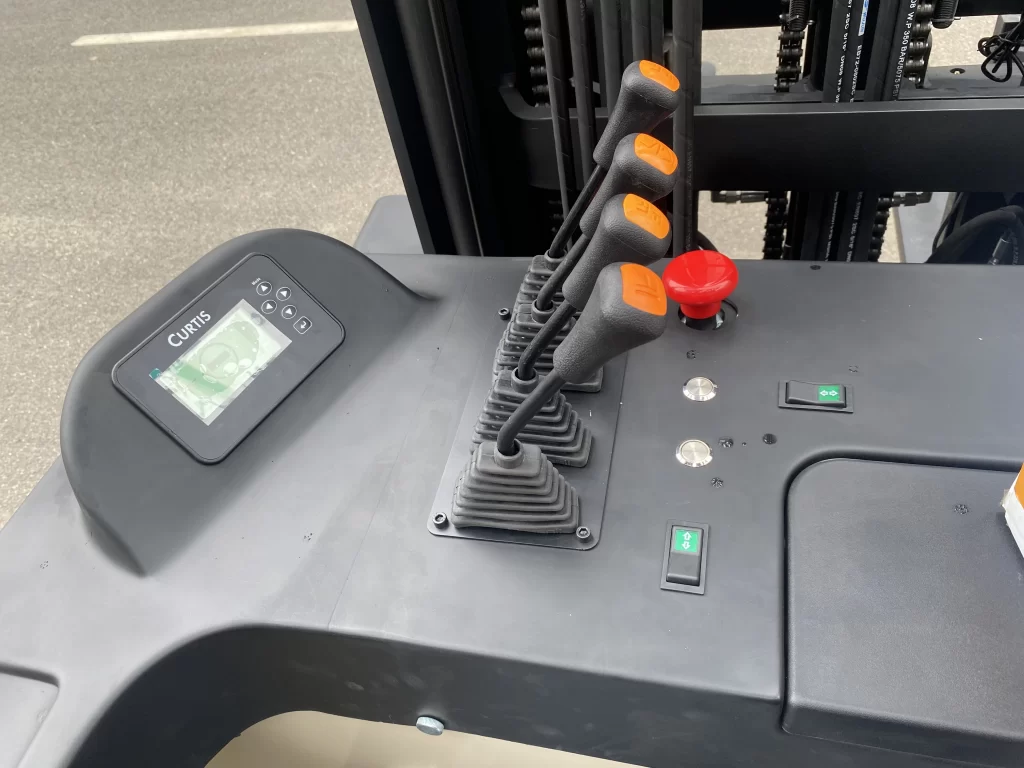
Our electric forklift’s advantage:
- Features a thickened steel rear axle and a transverse drive unit, facilitating a low center of gravity design for the entire vehicle
- Brushless AC motor: high power, high torque, low noise, long service life, energy regeneration: 30% energy regeneration efficiency during braking
- Maintenance-free lead-acid dry cell battery, easy maintenance and long battery life with up to 3000 charge and discharge cycles.
- Integrally forged forks and thickened 7-section chain
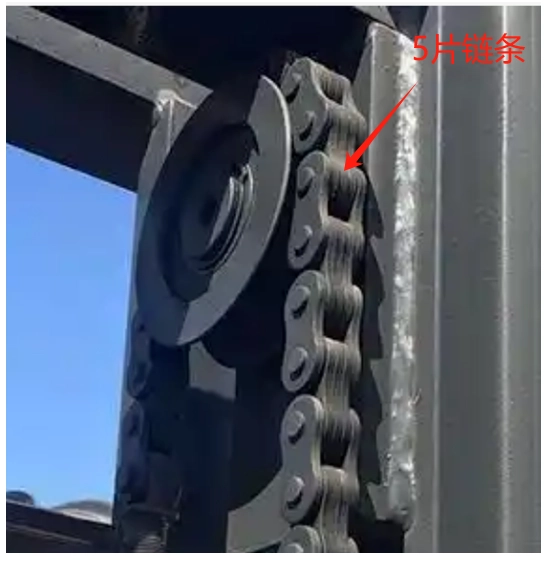
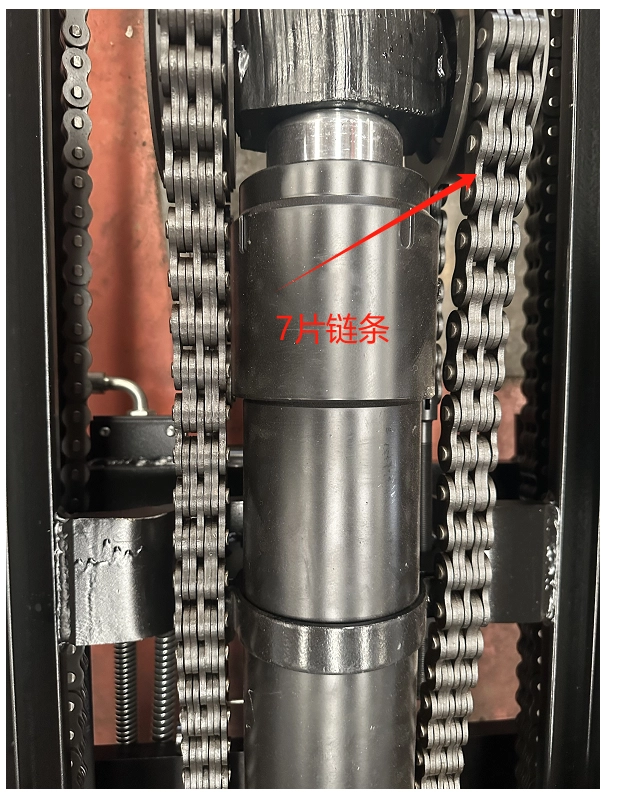
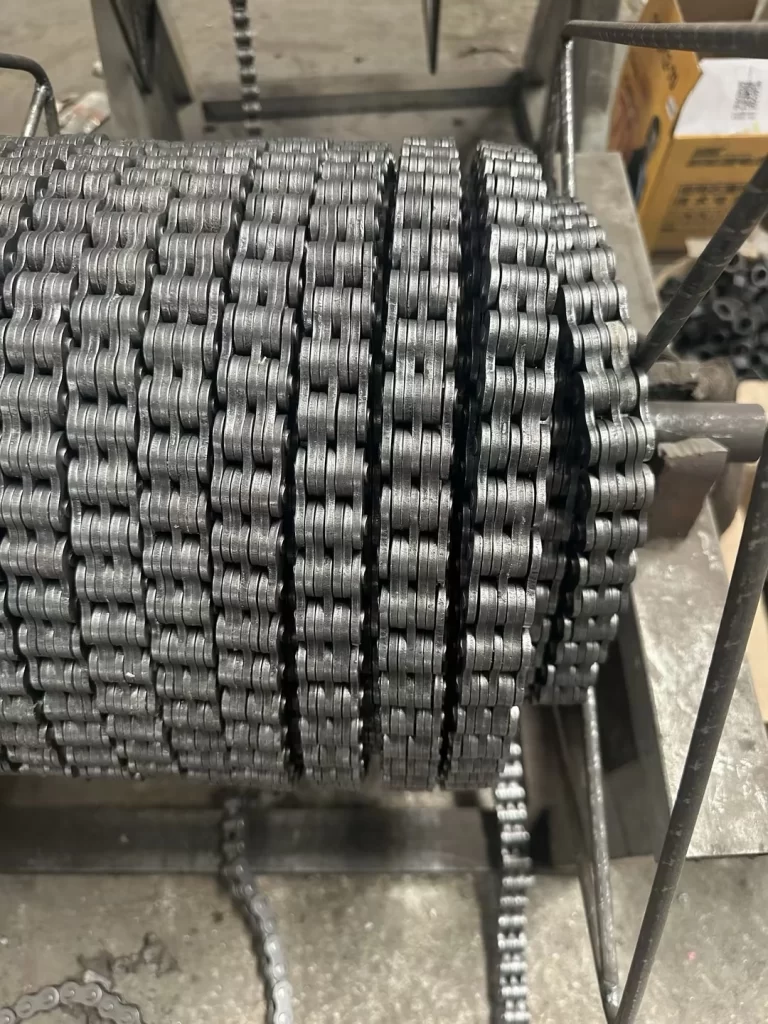
Conclusion: Matching Equipment to Your Operational Needs
For warehouses prioritizing space optimization and high-level storage, reach trucks provide unbeatable efficiency in narrow-aisle environments. Counterbalance forklifts remain the superior choice for versatile material handling across diverse terrains and heavier loads.
Pro Tip: Many operations benefit from maintaining both equipment types – using reach trucks for daily warehouse operations and counterbalance forklifts for loading/unloading and outdoor tasks.
Ready to optimize your material handling? Contact our experts for a personalized equipment assessment and discover how our solutions can transform your warehouse productivity.
